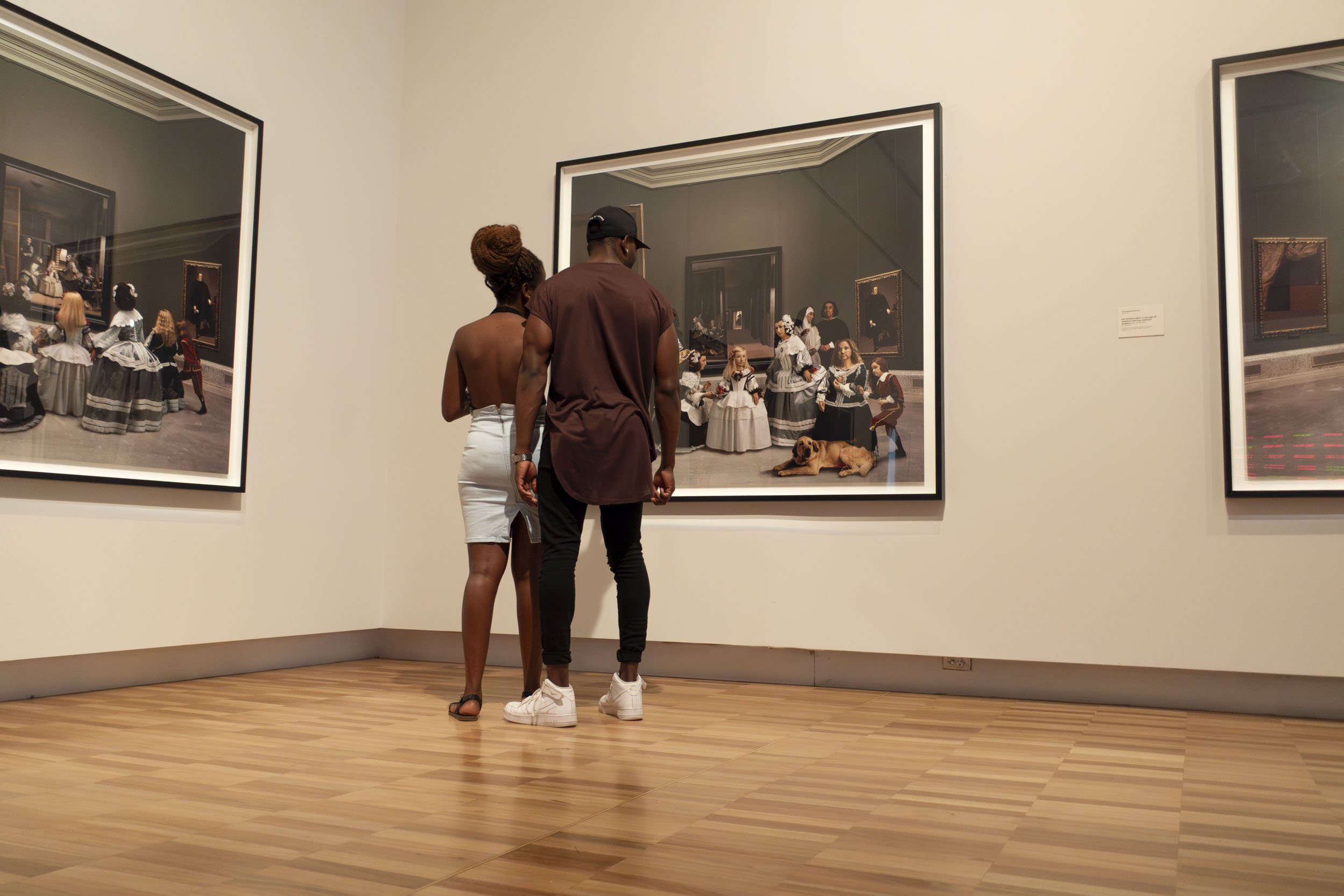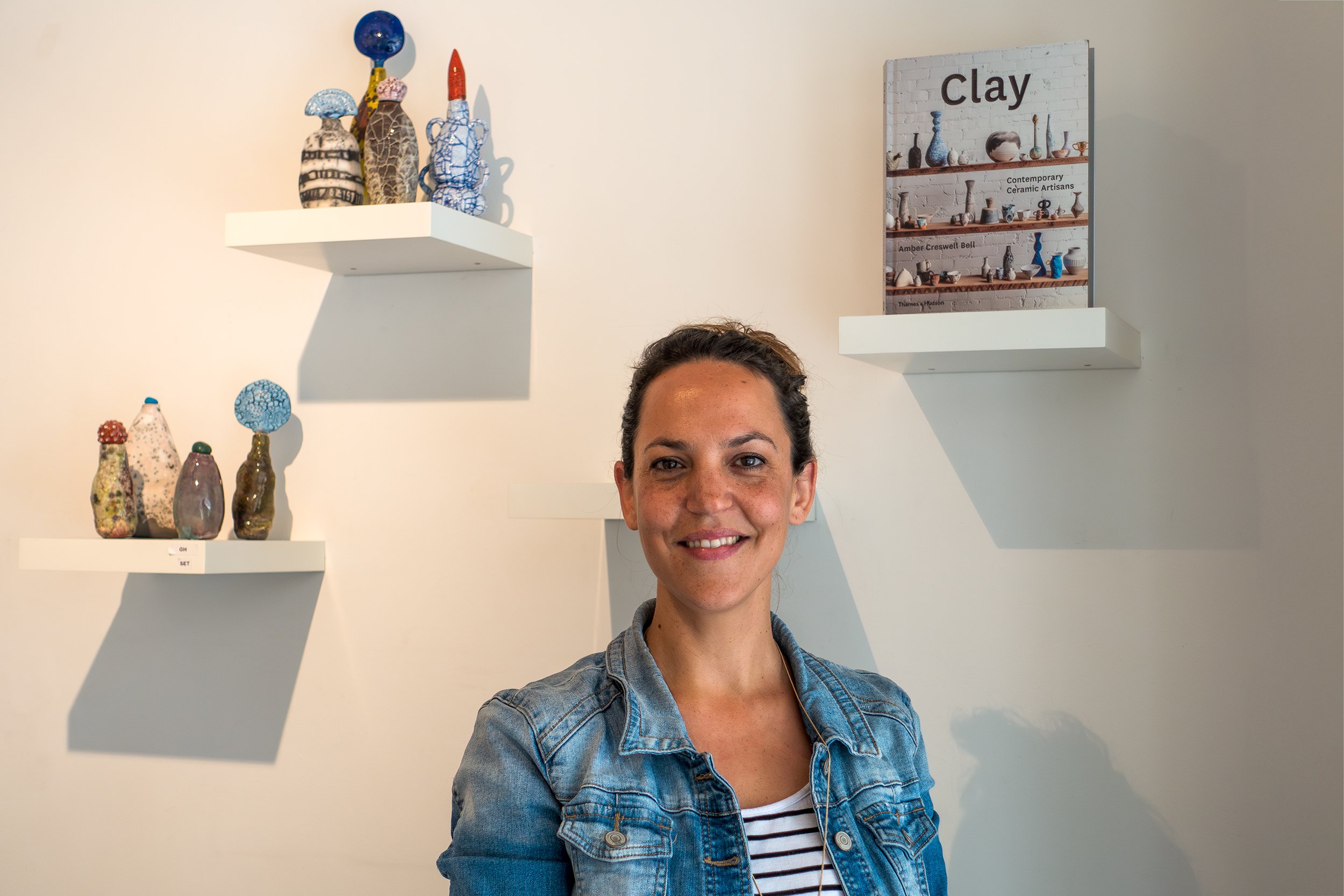Almost all of us have a phone full of photos. Phone photos are part and parcel of being in the moment, proof we were there and ensuring the moment is ours to keep and share immediately or to scroll to later to show and tell. Phone photography is a dominant and ubiquitous function of our phones. Phone photos express our existentialism more succinctly and swiftly than an actual phone call.
ABOVE: ‘Ways of Seeing’, EMM, two step portrait, Sydney, 2022. Photo: Michael Mangold, iPhone 13 Pro and Canon 6D.
PHONE PHOTO PAPARAZZI
Preschools and professional dog walkers send copious numbers of phone photos to parents and owners to prove their loved ones are alive and well and only hostages to fees. Children are confronted by family phone photo paparazzi from the moment they are born. The radiance of children’s faces on special occasions such as Christmas, birthdays, and first day at school, is irresistible. At times children react to overexposure with the technique of scoundrels and celebrities by using their hands to obscure their faces. Others pull faces or strike strange poses or engage in passive resistance by releasing sickly smiles to show their discomfort and displeasure.
EXISTENTIALISM
The world is so weirdly wonderful we cling to our phone photos to reassure ourselves we exist while at the same time remaining terrified at the thought of those photos being deleted, or lost with the phone. The thrill of having these existential machines in our bags and pockets often runs counter to the need to back up our photos or print them. A strange kind of titillation, security and insecurity combined. A wall against time we know in our heart of hearts must inevitably crumble.
FACIAL RECOGNITION
We also worry about AI scraping and the manipulation by strangers of images of ourselves and of others we’ve posted on social media. The prospect of a one-to-many facial recognition system checking an image of us against a database of facial images and possibly confusing us with someone facing criminal charges, adds to the stress. At the same time one-to-one face verification systems such as Apple’s Face ID in their words ‘revolutionises authentication’ and the protection of privacy and data, including phone photos.
PHOTOGRAPHIC TECHNIQUE
Photographers dedicated to stand-alone cameras, digital and photo-chemical film, operate on another branchline of technology with an ancestry connected more closely to the original invention of photography and its greater reliance on technique. Portraiture of various kinds for online and offline publications, weddings and other significant family events, glamour, corporates and self-promotion, leads the way in elevating self-images and public images above point and press phone photos.
The historical overlap between painted and photographic portraiture is intriguing. The different focal lengths and fields of view of camera lenses distill the elements of compositions in ways painters of portraits have utilised ever since photography was invented.
GOOD PORTRAITS
“A good portrait is actually what comes together in between the three elements of the artwork: the artist who makes it; the medium that they use and their skill as an artist; and the sitter,” says Bree Pickering, Director, National Portrait Gallery. “Why you would use art as a medium for portraiture is because you can tell stories about people and about culture in a very different way than you can in a more direct, didactic form.” [Australian Financial Review, Feb 7, 2023]
ABOVE: Yasumasa Morimura exhibition, Art Gallery of NSW, Sydney, 2017. Photo: Michael Mangold, Sony DSC-RX100M3.
Styles of photographic portraiture vary according to purpose but the principle division is between controlled conditions in studio and on location; including lighting, clothing, makeup and props, and photo documentary techniques using available light and adaptation to subject and situation.
ALCHEMY OF PHOTOGRAPHY
The alchemy of portrait photography for me is its facility for coalescing so much information into an image pinpointing person, place and time. The essence and thrill of ‘taking someone’s photo’ for me is described perfectly by Max Dupain, one of Australia’s greatest photographers.
You don't have to probe, you get a whack in the eye straightaway. One of the most important things about photography is that the moment you see a thing, you translate into the photographic image. It becomes a light picture immediately. [Page 8. Dupain’s Sydney by Jill White, introduction by Zeny Edwards, published by Chapter & Verse 1999]
ABOVE: Amber Creswell Bell, curator, author, writer, speaker, Saint Cloche Gallery, Sydney, 2016. Photo: Michael Mangold, Sony DSC-RX100M3.
FIXED FOCUS
The fixed focal length of my childhood Kodak Box Brownie camera with its 127 roll film (the origins of my Kodak127 Instagram handle) ruled out close-ups of people. My photographic portraits, from my earliest images as a 7 year old, have always featured context. This is very evident in my book on Paddington Markets photographed mostly with high-end Nikon F4 and Canon F1 35mm film cameras which I also used for corporate photography over many years. Another lifelong trait of my portrait photography comes from the personal challenge and satisfaction of shooting full frame which requires judgement and precision in managing light, angles and compositional elements.
Along the way I have had the privilege of interviewing and writing editorial on photographers David Moore, Lewis Morley, and writing on the photography of Max Dupain and William Yang, in the then State Library of NSW quarterly magazine Upfront.
MY SONY
Even when I am shooting for the square format of Instagram with my little Sony DSC-RX100M3 digital camera which I always carry in my backpack, I do my best to incorporate as much context as possible within the frame of my composition. Apart from members of my family, many of the photographic portraits I take are of people in situ, minimally posed, candid but definitely not snapshots, subject and photographer both in the moment in a meeting of minds. They are people whose personalities, demeanours and body language make them stand out, especially visual and performing artists, curators, and writers.


